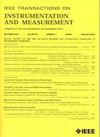基于傅里叶变换的弱光图像增强
IF 5.6
2区 工程技术
Q1 ENGINEERING, ELECTRICAL & ELECTRONIC
IEEE Transactions on Instrumentation and Measurement
Pub Date : 2025-04-02
DOI:10.1109/TIM.2025.3557114
引用次数: 0
摘要
微光图像增强(LLIE)技术是在保留图像细节的同时有效增强图像亮度的重要手段。在本文中,提出了PRNet,这是一种新的轻量级LLIE网络,它利用傅里叶变换,分两个阶段执行LLIE。在第一阶段,像素增强网络(PENet)通过密集的跳过连接结构来增强弱光图像(LLI)的亮度。这种结构结合了一个定制设计的基于傅立叶的亮度增强块(FBEB)。在第二阶段,细化和恢复网络(RRNet)处理第一阶段的输出,进一步恢复图像细节。使用双分支UNet结构实现详细细化,结合双向频域交叉注意求解器(BFDCS)来优化图像质量。为了彻底评估所提出的PRNet的性能,采用了9个完善的基准数据集进行详细的定量和定性评估。实验结果表明,PRNet在显著降低计算复杂度的前提下实现了高质量的图像增强。本文章由计算机程序翻译,如有差异,请以英文原文为准。
PRNet: Low-Light Image Enhancement Based on Fourier Transform
Low-light image enhancement (LLIE) techniques constitute a significant approach for enhancing image brightness effectively while preserving image details. In this article, PRNet is proposed, which is a novel lightweight LLIE network that leverages the Fourier transform, performing LLIE in two stages. In the first stage, a pixel enhancement network (PENet) enhances the brightness of the low-light image (LLI) through a dense skip-connection structure. This structure incorporates a custom-designed Fourier-based brightness enhancement block (FBEB). In the second stage, a refinement and restoration network (RRNet) processes the output from the first stage, further restoring image details. Detailed refinement is achieved using a dual-branch UNet structure, incorporating a bidirectional frequency-domain cross-attention solver (BFDCS) to optimize image quality. To thoroughly assess the performance of the proposed PRNet, nine well-established benchmark datasets were employed for detailed quantitative and qualitative evaluations. The experimental results show that PRNet achieves high-quality image enhancement at significantly reduced computational complexity.
求助全文
通过发布文献求助,成功后即可免费获取论文全文。
去求助
来源期刊

IEEE Transactions on Instrumentation and Measurement
工程技术-工程:电子与电气
CiteScore
9.00
自引率
23.20%
发文量
1294
审稿时长
3.9 months
期刊介绍:
Papers are sought that address innovative solutions to the development and use of electrical and electronic instruments and equipment to measure, monitor and/or record physical phenomena for the purpose of advancing measurement science, methods, functionality and applications. The scope of these papers may encompass: (1) theory, methodology, and practice of measurement; (2) design, development and evaluation of instrumentation and measurement systems and components used in generating, acquiring, conditioning and processing signals; (3) analysis, representation, display, and preservation of the information obtained from a set of measurements; and (4) scientific and technical support to establishment and maintenance of technical standards in the field of Instrumentation and Measurement.
 求助内容:
求助内容: 应助结果提醒方式:
应助结果提醒方式:


